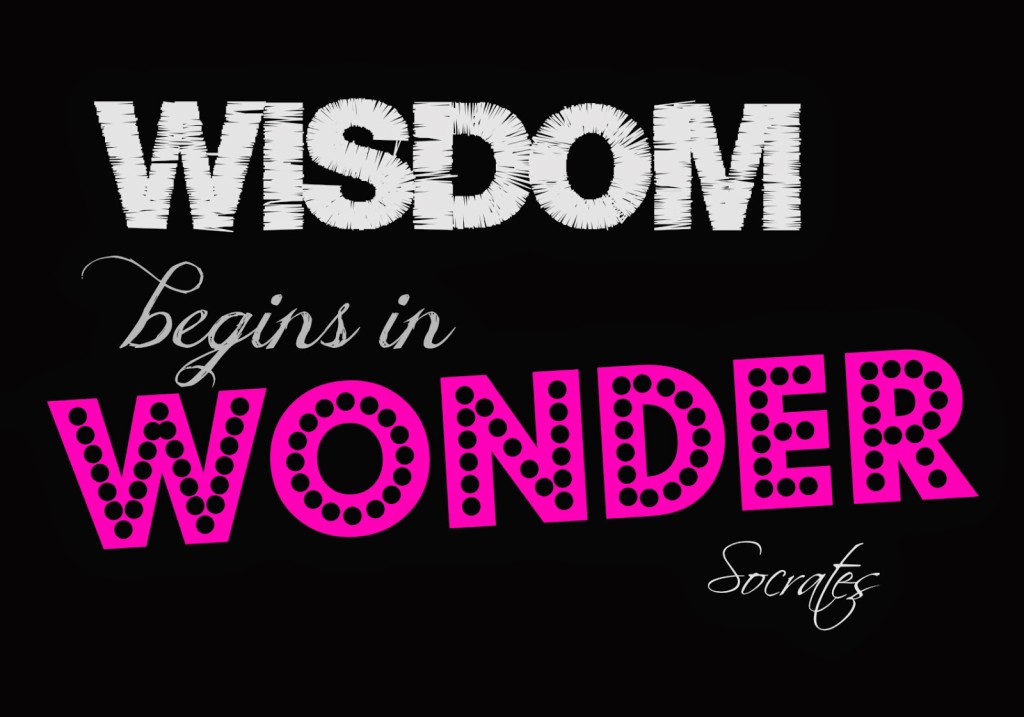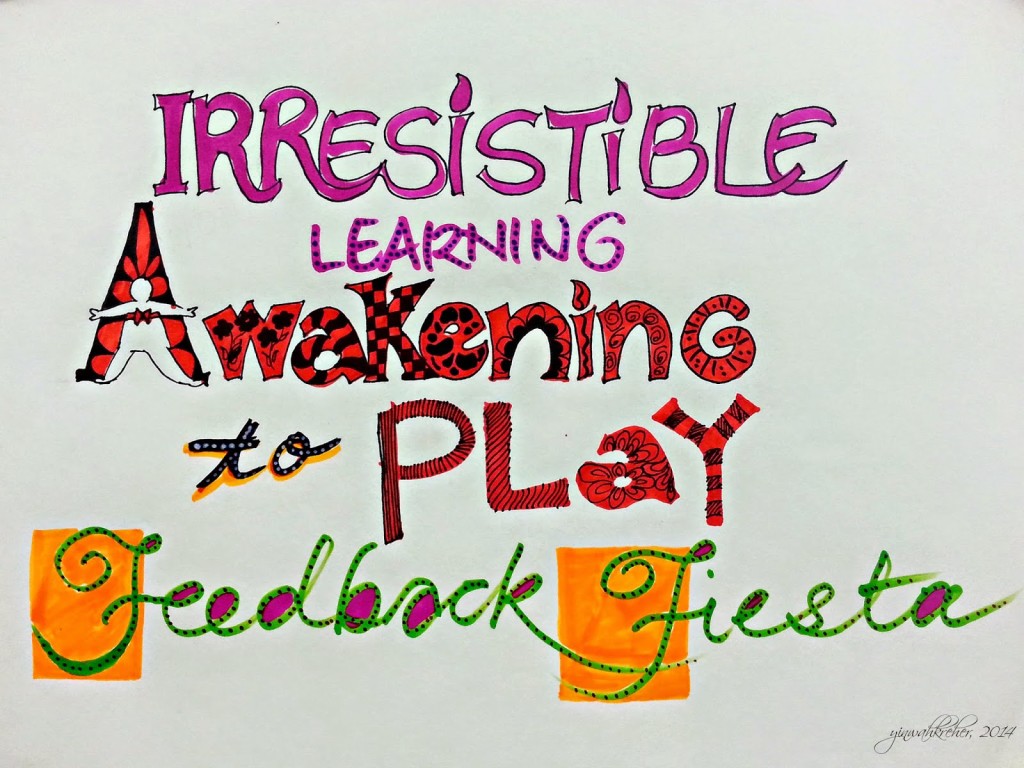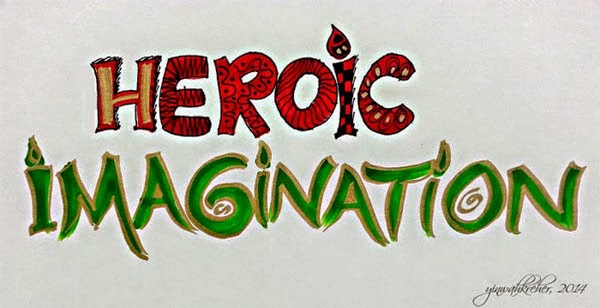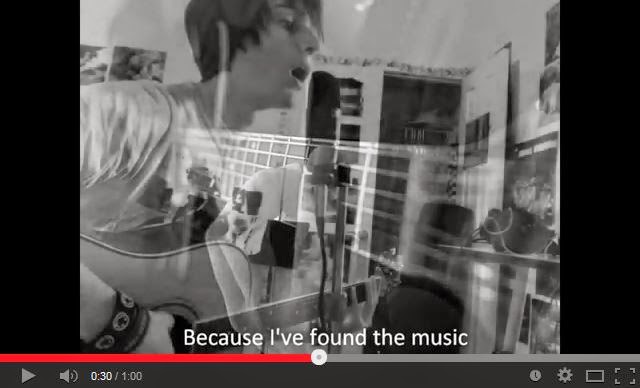Wonder, Irresistible Learning and Heroic Imagination
The name game is an intriguing one. Word pantomime or labels? A number of people I know, and in the fields I work closely in, dislike labels. Many believe labels have the potential to subtract value from who they truly are. (Have you heard of the “Label Jars Not People” organization established by Siobhan Brady to reduce mental health stigma?) Yet, human beings like to find pattern in chaos and ways to make sense of the world. So being aware of layers of perception about organizers as starting points (versus sticky unchangeable labels) is necessary in disabling potential communication barriers and the tendency to form misjudgements too quickly.In the world of paint, Donald Kaufman, a Master Colorist (Elle Decor, September 2012) has this to say:
Color names are extremely dangerous, which is why we use numbers instead. People see color differently because of names. Beige is undervalued because the name has a bad association. Mint sounds like the color of a hospital, but call it “faded eucalyptus” and people love it.
One of our best sellers is a white we call DKC-5. Mariette Himes Gomez compared it to Chanel No. 5.
The beauty industry is a prime example of fabulous word craft. Think of the names of creams, lipsticks and nail polish (Sephora’s Formula X nail polish — Kapow, Zing, Radioactive, Jolt, Oomph, Turbo, Seismic, Dare Me, etc; Dr. Dennis Gross 20 days to radiance skincare, HUM Runway Ready cream, Philosophy Hope in a Jar…). Alluring?
Kaufman’s words connected me to the world of words on learning motivation — especially short phrases or words that help me to focus learner attention and stimulate curiosity. For instance, I tweeted this in December 2013 and mentioned Yenawine’s (2013) book in a March 2014 blogpost:
Permission to … pic.twitter.com/9K3h5KqsS6
—  Yin Kreher (@yinbk) December 27, 2013
Yin Kreher (@yinbk) December 27, 2013
In this post, I want to share some more “wonder” and wonderful phrases I’ve come across recently!

In what ways can you give permission to students to wonder? OR, what sorts of educational strategies challenge students to wonder?Teaching/Learning implications of both phrases:
- How does that wonder extend into the development of wisdom?
- Are teachers prepared to assess and consider wonderment?
My initial thinking is of course to recommend the Visible Thinking approach (refer to my March blogpost mentioned earlier for See-Think-Wonder). Ritchart’s 8 classroom cultural forces would be a good framework to start with.
As I came across these phrases, I started to sketch out several others I’ve come across:
Teaching/Learning implications:
- What is irresistible learning? What would students expect from a course that offers irresistible learning? What does it look like?
- How indeed can we make learning IRRESISTIBLE?
- Do we want to make learning irresistible? Is it attainable?
- The Institute of Play associates irresistible learning with serious games, intentional games, game-based learning and simulations. Are serious games the chief means to foster irresistible learning? Games arguably awaken playfulness and curiosity in learners. By incorporating play elements into learning, serious and intentional games support complex thinking. How do we support serious games and game-based learning in higher ed/schools?
- Learn more about key Irresistible Learning design principles outlined by Katie Salen, Director of Institute of Play.
- Feedback is something we all crave in our learning journey — we want teachers, supervisors and loved ones to engage with us. But a Fiesta? What will it look like?
There is an abundance of advocates on creativity, innovation and imagination lately. I need not belabor the significance of these qualities. But the phrase heroic imagination is a new one to me. The Heroic Imagination Project (HIP) was founded by Dr. Philip Zimbardo, Professor Emeritus of Psychology at Stanford University. The project website describes HIP as a “nonprofit research-based organization which provides knowledge, tools,
strategies, and exercises to individuals and groups to help them to
overcome the social and psychological forces which can keep them from
taking effective action at crucial moments in their lives” (2013). Everyday heroism is also promoted on their social media and web sites. My guess or hypothesis is that it is powerful imagination (amongst other traits and factors) that propels “ordinary people to do extraordinary acts” of heroism for social justice and positive change. The premise of their argument is, Everyone can be a hero. You can be a hero too. Teaching/Learning Implications: How will you use your imagination heroically?
I can go on and on about a few other phrases; Desirable Difficulties by Robert Bjork and Productive Failure by Manu Kapoor, which I’ve mentioned in passing in an April 2014 blogpost. There is also Nudge Interventions and Theory (versus Coercion to comply) and many many others. But my blogpost is growing too long.
So I will leave you to “The love of learning, the sequestered nooks, and all the sweet serenity of books” (Henry Wadsworth Longfellow) till my next post. Explore the links I’ve inserted for a start.
Heroic Imagination. You may be afraid, but do it anyway.
References:
- Irresistible Learning (Source: Institute of Play website)
- Feedback Fiesta (Please let me know if you know the source. I’ve not been able to track where I got this from.)
- Awakening to Play is mine, I’m quite quite sure.
- Heroic Imagination (Source: http://heroicimagination.org/welcome/about-us/ and https://www.youtube.com/watch?v=mWQq0E8ENSc)





